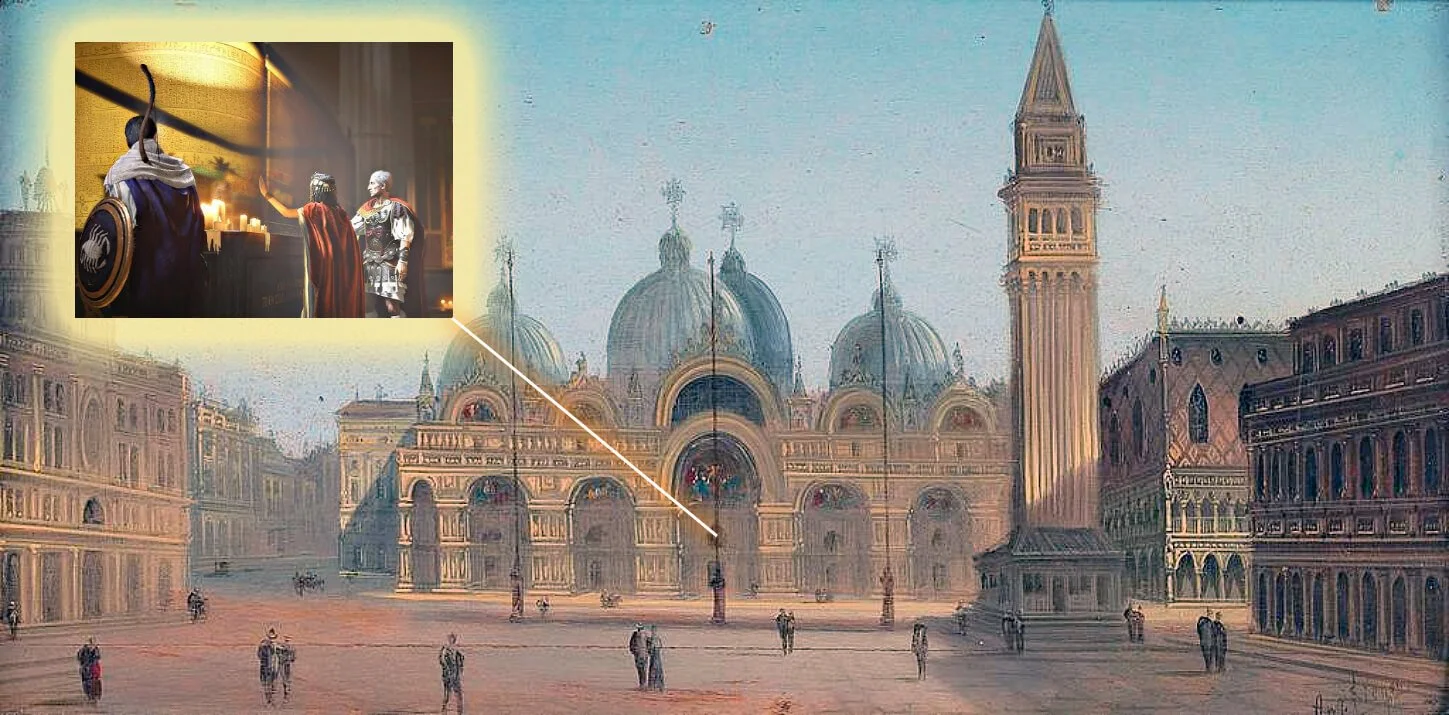The Eruption of Santorini’s Volcano: When Fire and Ash Consumed a Thriving Civilization
How the Great Eruption of Thera Reshaped the Aegean World and Echoed Through Myth and History
A Sleeping Giant Beneath the Sea
Long before whitewashed domes and sunset-chasers arrived in Santorini, the island was home to a flourishing Bronze Age civilization known today as the Minoans. Back then, around 1600 BC, the island wasn’t even called Santorini—it was known as Thera, a thriving hub of trade and culture in the southern Aegean Sea.
But beneath this vibrant world lay a monstrous force: a volcano, quiet for centuries, building pressure deep below. One fateful day, that sleeping giant awoke—and what followed was one of the most cataclysmic volcanic eruptions in human history.
The Day the Sky Turned to Fire
The eruption of Thera, dated between 1627–1600 BC (based on radiocarbon dating), was no ordinary volcanic event. It was colossal, estimated at VEI 6 or 7 (Volcanic Explosivity Index), putting it on par with Krakatoa and possibly even stronger.
It began with a series of massive earthquakes—shaking the foundations of Minoan settlements. Panic likely gripped the people of Akrotiri, Thera’s bustling port town. The ground cracked. The sea may have drawn back ominously. Then came the explosion.
What erupted was not just lava—it was a fountain of fire, ash, and pumice that spewed more than 30 cubic kilometers of volcanic material into the sky. The island itself tore apart, forming the caldera we see today.
Within hours, darkness fell over the Aegean as ash clouds reached heights of 30 to 35 kilometers, blocking the sun. Tsunamis—some possibly 15 meters high—radiated outward, devastating nearby coasts, especially northern Crete, the heartland of Minoan civilization.
Akrotiri: The Minoan Pompeii
Beneath the ash, something remarkable survived: the city of Akrotiri.
Unlike Pompeii, where human remains were found in abundance, Akrotiri reveals a strange silence. The city’s streets were empty when the ash fell. No skeletons. No panicked bodies. This suggests the residents had early warning and evacuated—perhaps in the days of tremors before the final blast.
Thanks to the volcanic preservation, Akrotiri offers a rare glimpse into Bronze Age life: multi-story homes, elegant frescoes, paved streets, indoor plumbing, and vibrant art. This wasn’t a crude village—it was an advanced society lost in time.
A Disaster Felt Across the Ancient World
The effects of Thera’s eruption weren’t limited to the island itself. Ash fell as far as Anatolia, Cyprus, and even Egypt. Sunlight dimmed. Crops failed. Climatic disruption followed.
Most dramatically, it weakened the Minoan civilization. Whether it was the tsunamis that hit Crete’s northern shores or the economic devastation from lost trade routes, the once-dominant Minoans declined soon after. Within a few generations, the Mycenaeans of mainland Greece rose to power, absorbing Minoan influence but replacing their dominance.
Atlantis, Echoes in Myth?
Could this cataclysm be the real story behind the legend of Atlantis?
Many scholars believe Plato’s tale of a great island civilization destroyed in a day and a night might be a mythologized memory of Thera. The sudden disappearance of a prosperous, sea-faring culture… swallowed by the sea… sounds eerily familiar.
Though Plato placed Atlantis beyond the “Pillars of Heracles,” some argue he was drawing on older, garbled tales passed down through Egyptian sources—tales that could trace their roots to the volcanic fury of ancient Thera.
Santorini Today: Beauty Born of Fire
Modern Santorini is a place of stark contrasts—black sand beaches, white villages clinging to cliffs, and a still-active caldera at its center. Tourists sip wine and watch the sun dip below the volcano’s rim, often unaware they’re gazing into the heart of a cataclysm that changed the course of history.
Santorini’s beauty today is the direct legacy of that terrible day when the volcano awoke.
Conclusion: The Day That Changed Everything
The eruption of Thera wasn’t just a geological event. It was a turning point—a cultural, political, and environmental shockwave that altered the trajectory of the Aegean world. It likely contributed to the fall of the Minoans, reshaped Mediterranean trade, and echoed down through legend and myth.
When the volcano awoke, it did more than destroy an island—it reshaped a civilization and left behind a haunting beauty that still captivates the world.







